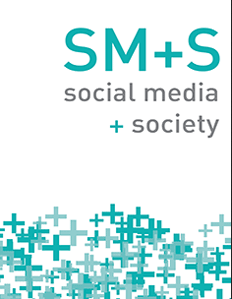个人社交媒体的工作流程:揭开社交媒体背后的 "工作 "面纱
IF 5.5
1区 文学
Q1 COMMUNICATION
引用次数: 0
摘要
许多员工都在使用个人工作社交媒体(PSMW),即通过用户的个人社交媒体账户发布与工作相关的内容。尽管定量研究证明了在社交媒体上谈论工作的存在和结果,但学者们对使用 PSMW 的过程知之甚少。为了填补这一空白,本研究将社会认同理论和边界理论作为概念框架,以了解人们为什么以及如何参与 PSMW。通过分析来自不同行业和工作安排的员工社交媒体的访谈和观察数据,我们提出了一个 PSMW 模型。我们的研究结果至少在三个方面为学术研究做出了贡献。首先,本研究通过 "劳累的工作生活"(Labored Worklife)模式揭示了 PSMW 背后的 "工作":一种既真实又有策略的沟通悖论。其次,我们的研究结果表明,PSMW 是一种独特而灵活的方式,工人可以通过这种方式跨越复杂的工作和非工作边界,并在社交媒体上交流多重(甚至是相互冲突的)身份。第三,本项目提出了 PSMW 与围绕工作情绪的学术研究之间的联系。本文章由计算机程序翻译,如有差异,请以英文原文为准。
The Process of Personal Social Media for Work: Unveiling the “Work” Behind Social Media
Many employees are engaging in personal social media for work (PSMW), which involves posting work-related content from a user’s individual social-media account. Despite quantitative studies demonstrating the presence and outcomes of talking about work on social media, scholars know little about the process of using PSMW. To fill this gap, the current study uses social identity theory and boundary theory as conceptual frames to learn why and how people engage in PSMW. Through analyzing interview and observational data from employees’ social media across a variety of industries and work arrangements, we present a model of PSMW. Our findings contribute to scholarship in at least three ways. First, this study exposes the “work” behind PSMW through a pattern of Labored Worklife: a paradox of communicating both authentically and strategically. Second, our findings show PSMW as a distinctive, flexible way through which workers can traverse complicated work and non-work borders and communicate multiple (even conflicting) identities on social media. Third, this project suggests connections between PSMW and scholarship surrounding emotion at work.
求助全文
通过发布文献求助,成功后即可免费获取论文全文。
去求助
来源期刊

Social Media + Society
COMMUNICATION-
CiteScore
9.20
自引率
3.80%
发文量
111
审稿时长
12 weeks
期刊介绍:
Social Media + Society is an open access, peer-reviewed scholarly journal that focuses on the socio-cultural, political, psychological, historical, economic, legal and policy dimensions of social media in societies past, contemporary and future. We publish interdisciplinary work that draws from the social sciences, humanities and computational social sciences, reaches out to the arts and natural sciences, and we endorse mixed methods and methodologies. The journal is open to a diversity of theoretic paradigms and methodologies. The editorial vision of Social Media + Society draws inspiration from research on social media to outline a field of study poised to reflexively grow as social technologies evolve. We foster the open access of sharing of research on the social properties of media, as they manifest themselves through the uses people make of networked platforms past and present, digital and non. The journal presents a collaborative, open, and shared space, dedicated exclusively to the study of social media and their implications for societies. It facilitates state-of-the-art research on cutting-edge trends and allows scholars to focus and track trends specific to this field of study.
 求助内容:
求助内容: 应助结果提醒方式:
应助结果提醒方式:


